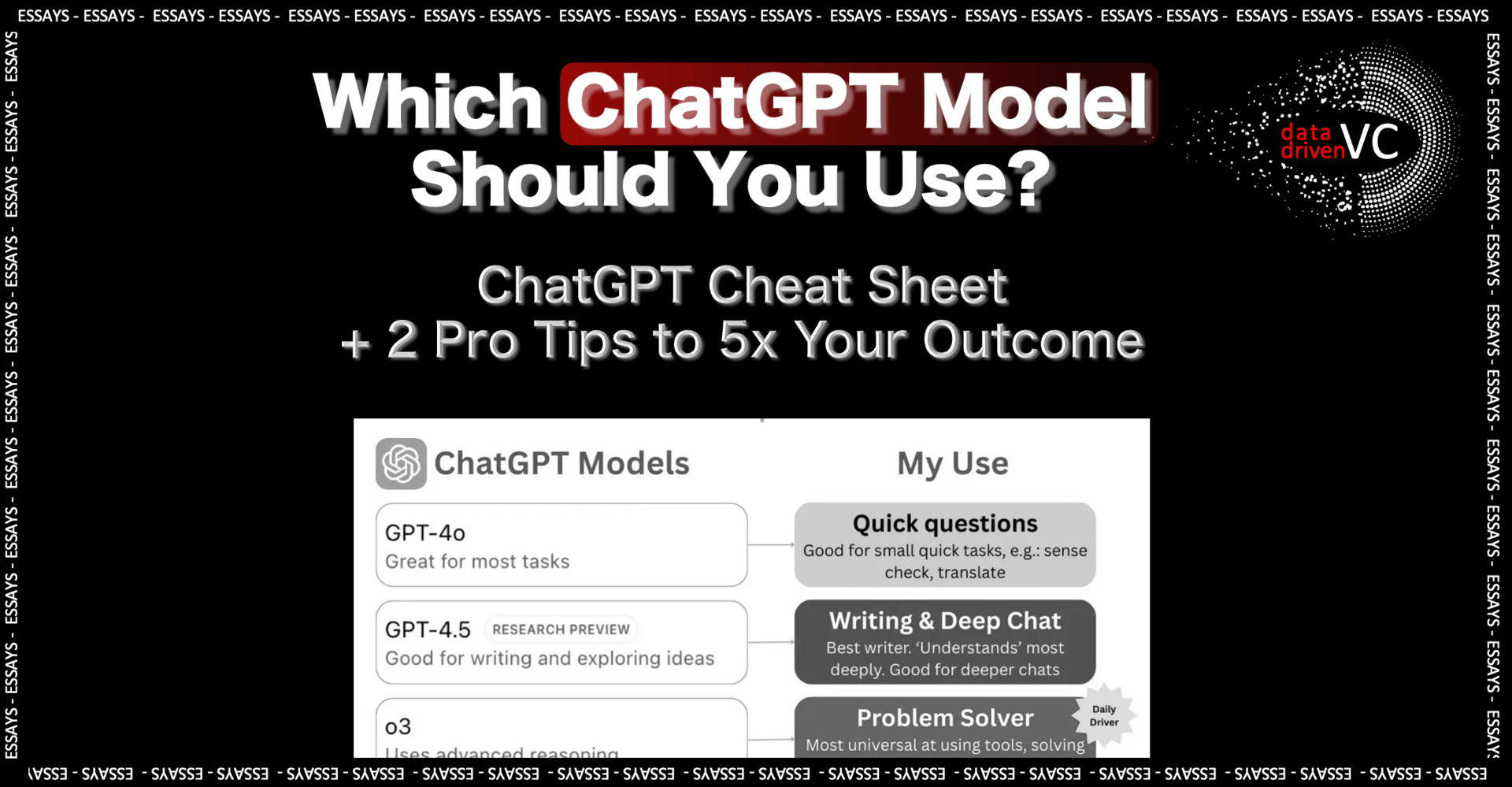👋 Hi, I’m Andre and welcome to my newsletter Data-Driven VC which is all about becoming a better investor with Data & AI. Join 33,430 thought leaders from VCs like a16z, Accel, Index, Sequoia, and more to understand how startup investing becomes more data-driven, why it matters, and what it means for you.
Brought to you by Harmonic — The Complete Startup Database
Market maps finally work in venture software. Scout — the AI agent made for VCs allows you market map with ease. Simply describe what you’re looking for, or look up the competitive landscape for a particular company.
Scout handles the rest, scouring the internet as well as Harmonic’s private database trusted by thousands of investors from leading firms like GV and Insight.
Hi there!
I recently shared “Six AIs. One Prompt. Who Nailed It?” and received lots of great feedback from you, including super powerful tips & tricks on how to optimize results across models, and when to use which models.
Today, I wanted to share the summary of these conversations in a simple cheat sheet. And the two most powerful tricks to easily 5x your outcomes across models at the end of this episode.
Let’s jump in!
🧰 Which Model Should You Use…
Subscribe to our premium content to read the rest.
Become a paying subscriber to get access to this post and other resources from the exclusive Data Driven VC community.
UpgradeA subscription gets you:
- Lists of 312 Family Offices + 59 Pension funds + 1513 angels
- Annual ticket for the virtual DDVC Summit
- Access our archive of 300+ articles
- 1 new premium article per week
- Virtual & physical meetups
- Masterclasses & videos
- Access to AI Copilots
- Prompt Database
- ... and lots more



